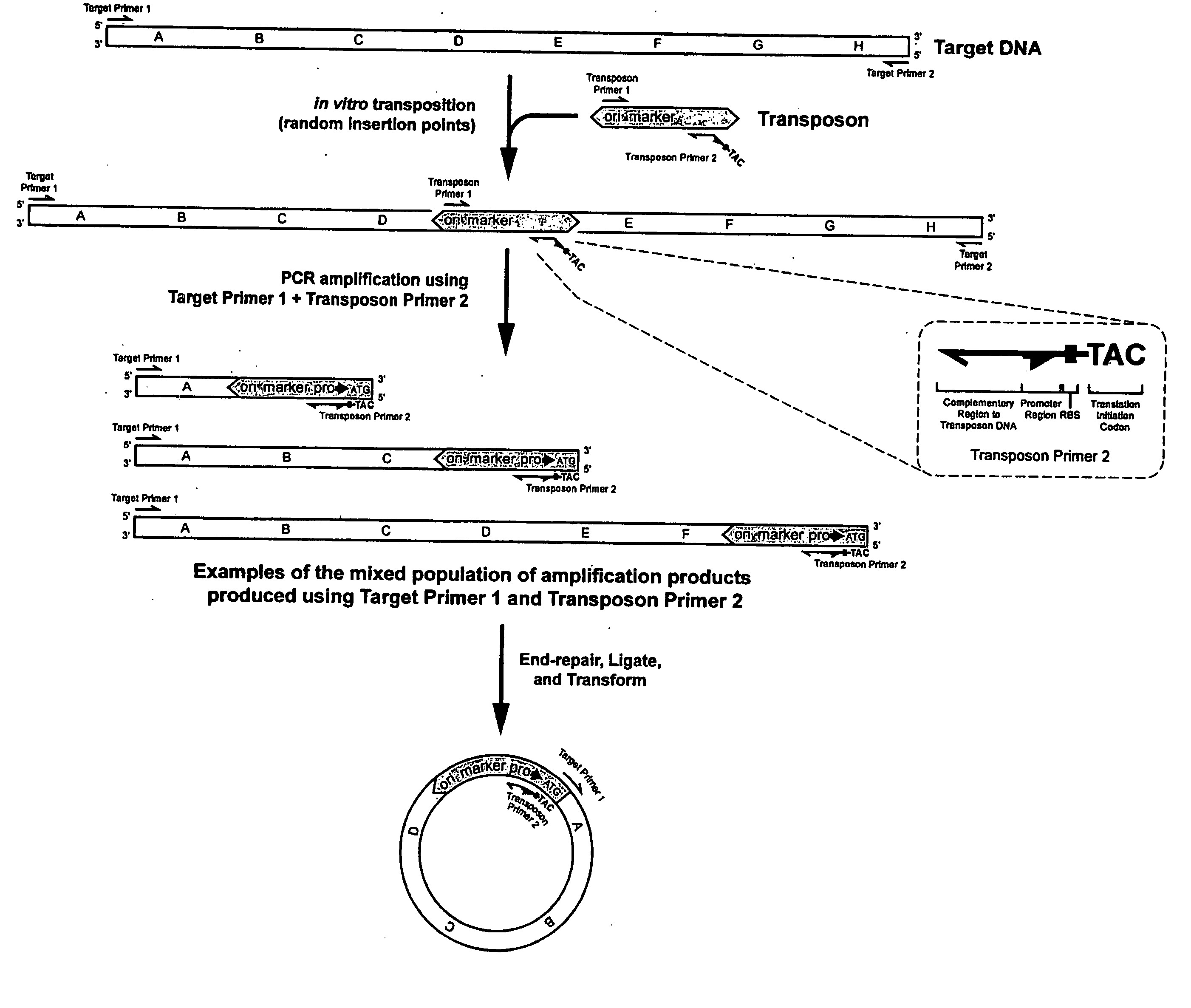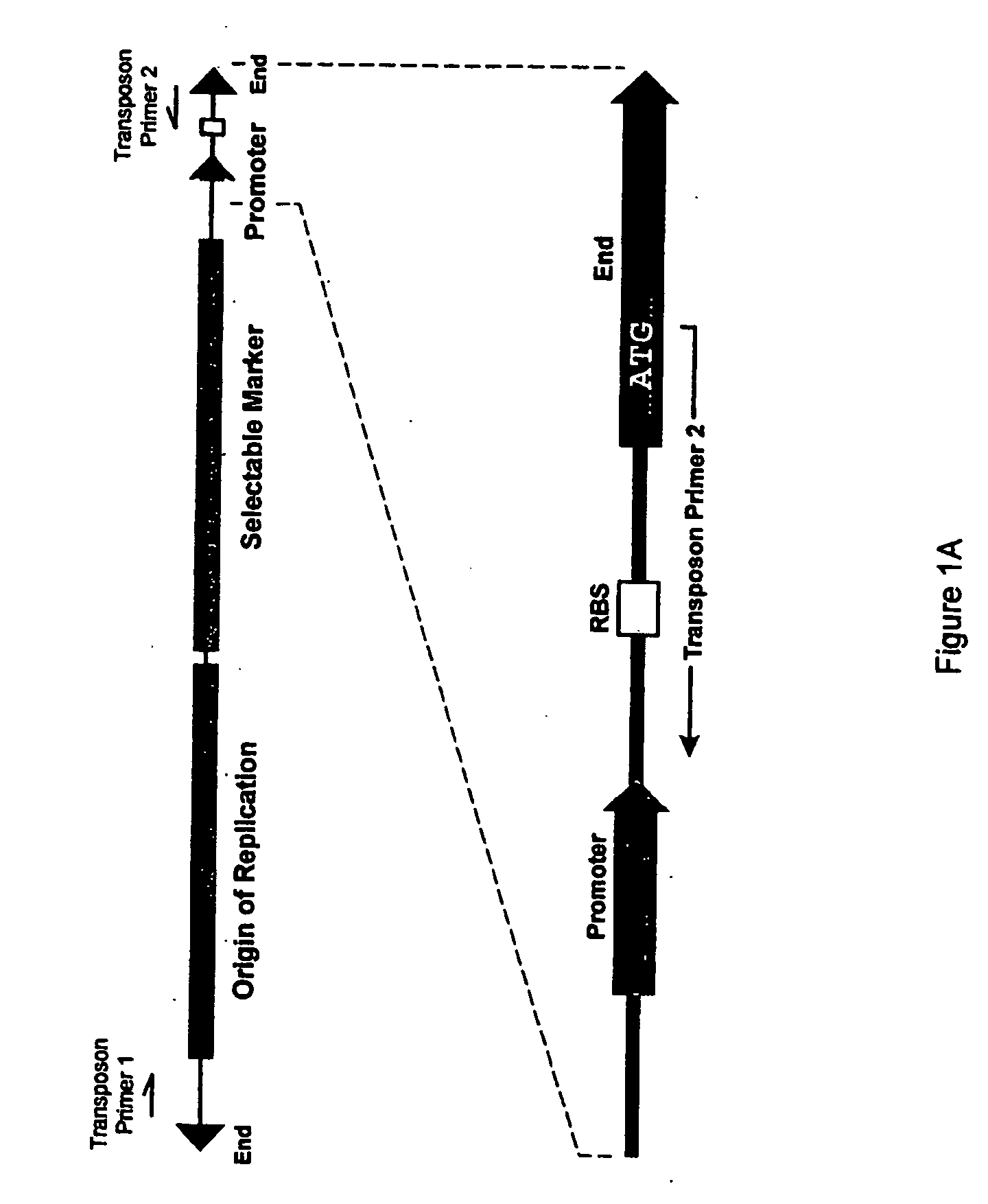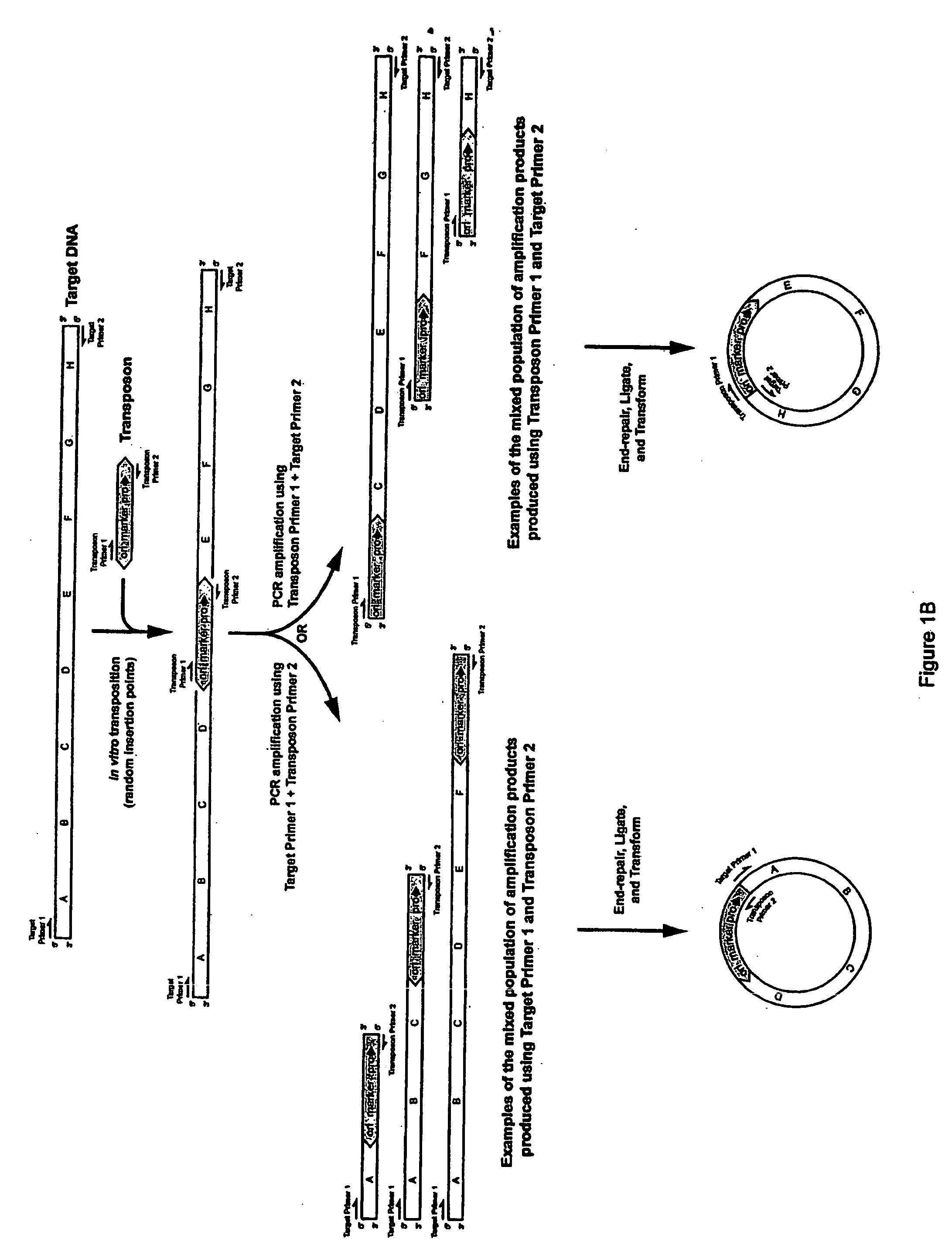Methods for obtaining directionally truncated polypeptides
a polypeptide and directional truncation technology, applied in the field of directions, can solve the problems of lack of efficiency, time-consuming and wasteful current and time-consuming and wasteful techniques for generating deletions in target sequences
- Summary
- Abstract
- Description
- Claims
- Application Information
AI Technical Summary
Benefits of technology
Problems solved by technology
Method used
Image
Examples
example 1
Random Insertion of a Transposon into a Target DNA
[0151] The E. coli DNA polymerase I gene (poIA) was chosen as target DNA, since it contains three well-characterized domains: a 5′-to-3′ exonuclease domain, a 3′-to-5′ exonuclease domain, and a DNA polymerase domain (see FIG. 3). Target DNA was prepared by PCR using E. coli genomic DNA as a template and the following primers:
(polFP, Sequence ID No. 1)5′-CAGGCACGGACATTATGGTT-3′and
[0152]
(polRP, Sequence ID No. 2)5′-AGGCATGTTCAGGCGAATCT-3′.
[0153] A 50-microliter PCR reaction mixture was prepared comprising the two primers, about 100 nanograms of E. coli DNA, FailSafe™ DNA Polymerase Mix, and FailSafe™ PCR PreMix E using methods described by the manufacturer (EPICENTRE). Thirty PCR cycles were performed comprising a 30-second denaturation step at 94° C., a 30-second annealing step at 60° C., and a 2.5-minute extension step at 72° C.
[0154] The transposon used in this example was derived from the EZ::TN™ Transposon (commercially availa...
example 2
Amplification of a Portion of the Target Sequence and a Portion of the Inserted Transposon
[0156] The products of the transposition reaction obtained in EXAMPLE 1 were ethanol precipitated to remove SDS, diluted 1:10 with TE, and subjected to PCR using the FailSafe™ PCR system with FailSafe™ PCR PreMix E, which is commercially available from EPICENTRE Technologies, Madison, Wis. Twenty-five PCR cycles were performed comprising a 30-second denaturation step at 94° C., a 30-second annealing step at 60° C., and a 4-minute extension step at 72° C.
[0157] The primers used were polRP (Sequence ID No. 2) and the transposon end primer (RPX, Sequence ID No. 3):
(RPX, Sequence ID No. 3)5′-AGATGTAGGTGTTCCACAGGGTAG-3′.
example 3
Cloning of the Amplification Products
[0158] The products of the PCR reaction of EXAMPLE 2 were precipitated with an equal volume of PCR precipitation solution (EPICENTRE), resuspended in 50 microliters of TE (10 mM Tris, 1 mM EDTA, pH 7.5), end-repaired with the End-It™ DNA End-Repair-Kit (commercially available from EPICENTRE Technologies, Madison, Wis.), and self-ligated using the FastLink™ DNA Ligation Kit (EPICENTRE, Madison, Wis.). One microliter of the ligated DNA was electroporated into electrocompetent TransforMax™ EC100D™pir116:λDE3 cells. This TransforMax™ EC100D™pir116:λDE3 host strain was prepared from the TransforMax™ EC100D™pir116 strain (available from EPICENTRE) by using the λDE3 Lysogenization Kit (commercially available from Novagen®, EMD Biosciences, Madison, Wis.) as described by Novagen; λDE3 lysogenization incorporates an inducible T7 RNA polymerase gene into the TransforMax™ EC100D™pir116 strain, which can be used to express genes in the resulting host cells ...
PUM
| Property | Measurement | Unit |
|---|---|---|
| volume | aaaaa | aaaaa |
| nucleic acid | aaaaa | aaaaa |
| nucleic acid sequence | aaaaa | aaaaa |
Abstract
Description
Claims
Application Information
 Login to View More
Login to View More - R&D
- Intellectual Property
- Life Sciences
- Materials
- Tech Scout
- Unparalleled Data Quality
- Higher Quality Content
- 60% Fewer Hallucinations
Browse by: Latest US Patents, China's latest patents, Technical Efficacy Thesaurus, Application Domain, Technology Topic, Popular Technical Reports.
© 2025 PatSnap. All rights reserved.Legal|Privacy policy|Modern Slavery Act Transparency Statement|Sitemap|About US| Contact US: help@patsnap.com



